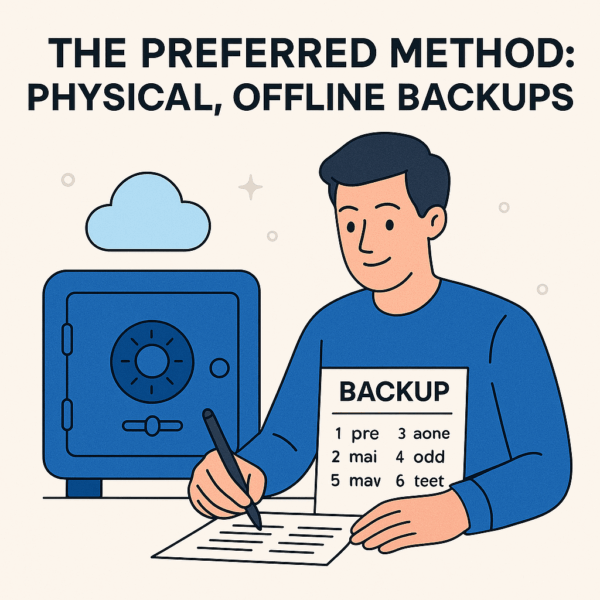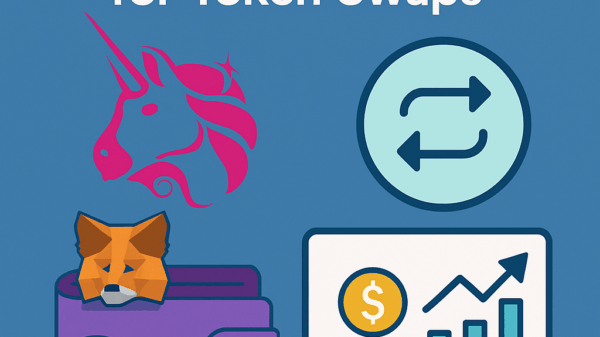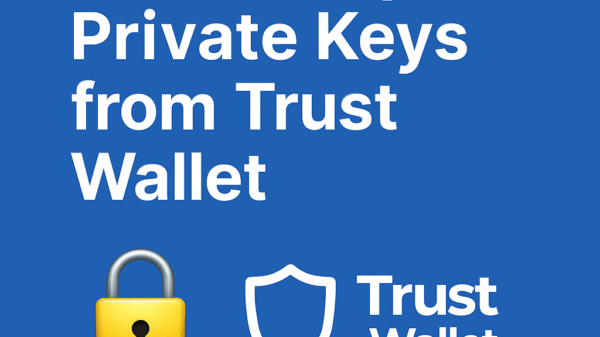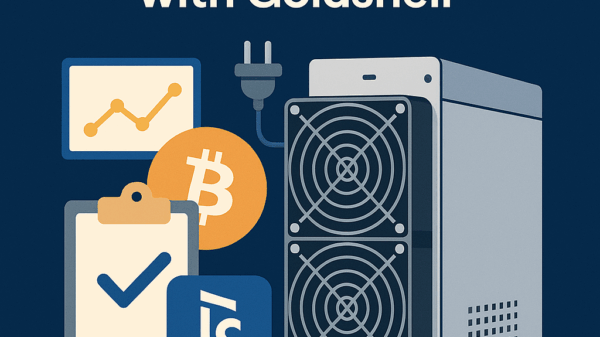How to Back Up Your Digital Wallet
By Jason Miller – Crypto Writer 10.expert 🧠 Covering Bitcoin, altcoins, blockchain & Web3.
As a crypto writer and analyst, the concept of “backing up your digital wallet” is fundamentally different from backing up files on your computer or phone. In the world of self-custody crypto, you’re not backing up the “wallet” software itself in the traditional sense. Instead, you are meticulously safeguarding the seed phrase (also known as a recovery phrase or mnemonic phrase) that controls your private keys. This seed phrase is the ultimate key to your crypto, and its security is paramount.
In 2025, with increasing sophistication in cyber threats and the ever-present risk of physical loss or damage, robust backup strategies are non-negotiable. Whether you’re holding a significant amount of Bitcoin or just starting your journey with a few altcoins, knowing how to properly back up your digital wallet (i.e., your seed phrase and potentially a passphrase) is the most important security measure you can take. Neglecting this step is akin to keeping all your cash in a shoebox under your bed without any record of how to get it back if the house burns down.
Let’s dive into how to back up your digital wallet like a seasoned pro, ensuring your digital assets are recoverable and secure, no matter what.
How to Back Up Your Digital Wallet: Safeguarding Your Crypto Fortune 🛡️💾
Properly backing up your crypto wallet is the most critical step in securing your digital assets. It ensures you can recover your funds even if your device is lost or damaged.
Understand the Core Concept: It’s About Your Seed Phrase 🔑
- Master Key: Your crypto wallet’s “backup” is almost always the 12 or 24-word “Secret Recovery Phrase” (seed phrase) generated during wallet setup. This phrase deterministically generates all your private keys and addresses.
- Not the App: You don’t back up the wallet app itself; you back up the cryptographic information (the seed phrase) that allows you to restore your access to funds on any compatible wallet.
The Golden Rule: Never Store Your Seed Phrase Digitally! 🚫💻
- Digital Vulnerability: Any digital copy (screenshot, text file, cloud storage, email, photo, password manager) is susceptible to hacking, malware, and phishing.
- Air-Gapped is Best: The most secure method is to keep your seed phrase completely offline, air-gapped from any internet connection.
The Preferred Method: Physical, Offline Backups ✍️

- Write it Down Clearly: The most common and recommended method. Use a new, high-quality, acid-free paper and a waterproof, fade-resistant pen. Write down each word precisely, in the correct order.
- Multiple Copies: Create at least two, preferably three, exact copies of your seed phrase. This redundancy protects against a single point of failure (e.g., one copy gets lost or damaged).
- Secure, Separate Locations: Store each copy in physically separate, secure, and private locations that are protected from environmental hazards (fire, flood, mold, theft).
- Examples: Fireproof home safe, bank safe deposit box, a trusted friend or family member’s secure location (if you have an inheritance plan in place).
Elevate Durability with Metal Backups 🔥💧
- Ultimate Resilience: For enhanced protection against fire, water, impact, and corrosion, consider a metal seed phrase storage solution.
- Types: These often involve engraving, stamping, or punching your seed phrase onto a metal plate (e.g., Cryptosteel, Billfodl, Cryptotag).
- DIY Options: You can even create your own using stainless steel washers and stamping tools.
Implement a Passphrase (25th Word) for Enhanced Security 🔐➕
- Optional Layer: Many hardware wallets and some software wallets offer an optional “passphrase” (often called a 25th word). This passphrase, combined with your 12/24-word seed phrase, creates a unique, “hidden” wallet.
- Plausible Deniability: Even if your main seed phrase is compromised, the funds associated with the passphrase remain safe, as they require both the seed phrase and the passphrase to access.
- Crucial Rule: Store your passphrase separately from your 12/24-word seed phrase. Never keep them together. Memorizing the passphrase is the most secure method, if feasible.
Initial Generation: Use a Secure Environment ✨
- Hardware Wallet Generation: Ideally, your seed phrase should be generated on a new, trusted hardware wallet (e.g., Ledger, Trezor). These devices create the phrase offline, ensuring it’s never exposed to an internet-connected device.
- Reputable Software Wallets: If using a software wallet, ensure your device is clean from malware and download the wallet from its official website or app store.
Beware of Address Poisoning Scams When Backing Up 😈
- While primarily relevant for sending, be mindful that scammers may try to trick you into inadvertently exposing information by mimicking legitimate addresses. Always verify any recovery process directly through official channels and never through unsolicited links.
Regularly Verify Your Backups (Safely!) 🧪
- Recovery Check: Most hardware wallets have a “recovery check” or “seed phrase verification” feature that allows you to confirm your written seed phrase is correct without exposing your actual funds.
- Simulated Restore (Advanced): For experienced users, you can perform a full restore of your wallet using your seed phrase on a separate, clean, air-gapped device. After successful verification, wipe the test device completely. Never do this on your main, online device.
Consider Tamper-Evident Packaging 📦
- Detection: Store your physical backups in tamper-evident bags or sealed envelopes. This provides a visual cue if someone has accessed your backup without your knowledge, allowing you to move funds quickly if compromised.
Plan for Inheritance and Succession ⚰️
- Future Access: For significant crypto holdings, integrate your digital assets into your overall estate plan.
- Secure Protocols: Explore multi-signature wallets (which require multiple keys to authorize transactions) or trusted third-party solutions designed for crypto inheritance, ensuring your loved ones can access your funds if you’re incapacitated or pass away.
Do Not Trust Cloud Backups (Unless Highly Encrypted) ☁️
- Centralized Risk: While some wallets offer “encrypted cloud backups” (e.g., Coinbase Wallet for iCloud/Google Drive), this introduces a centralized point of failure. If you use this, ensure the encryption is client-side (you hold the key) and the password is extremely strong and unique. Offline physical backups are always preferred for core seed phrases.
Keep Software and Firmware Updated 🔄
- Security Patches: While not a direct backup method, keeping your wallet software and hardware wallet firmware updated ensures you benefit from the latest security patches and bug fixes, indirectly protecting your backup and funds.
Maintain Secrecy and Discretion 🤫
- Loose Lips Sink Ships: Avoid discussing the specifics of your crypto holdings or backup methods, even with close friends or family, unless they are part of a formal inheritance plan. The less people know, the safer your assets.
Understand Multi-Signature Wallets (Advanced Backup Strategy) 👥
- Shared Control: For very large holdings, a multi-signature (multisig) wallet requires multiple private keys (held by different individuals or on different devices) to authorize a transaction.
- Enhanced Redundancy: This creates a distributed backup system, where losing one key doesn’t mean losing everything, as long as the threshold number of signatures can still be met.
Educate Yourself Continuously 📚
- Evolving Threats: The crypto security landscape is constantly evolving. Stay informed about new scam tactics, vulnerabilities, and best practices. Your proactive learning is your best defense.
By adhering to these comprehensive backup strategies, you transform the inherently risky nature of self-custody into a robust and resilient system, ensuring your crypto wealth is protected for the long term.








